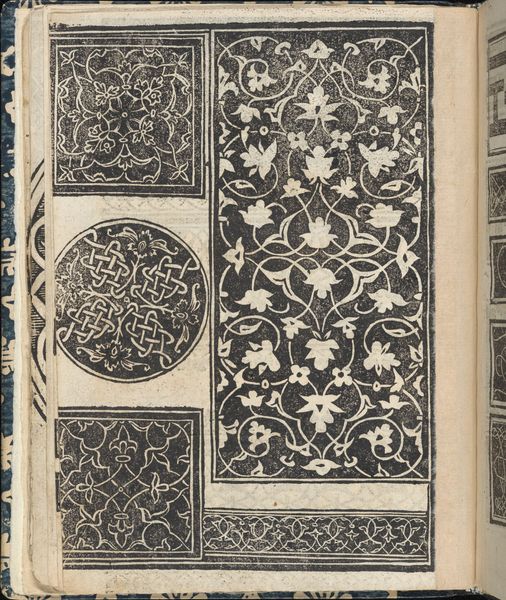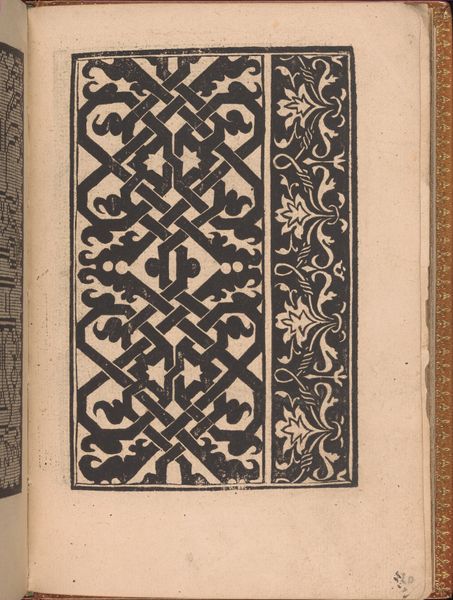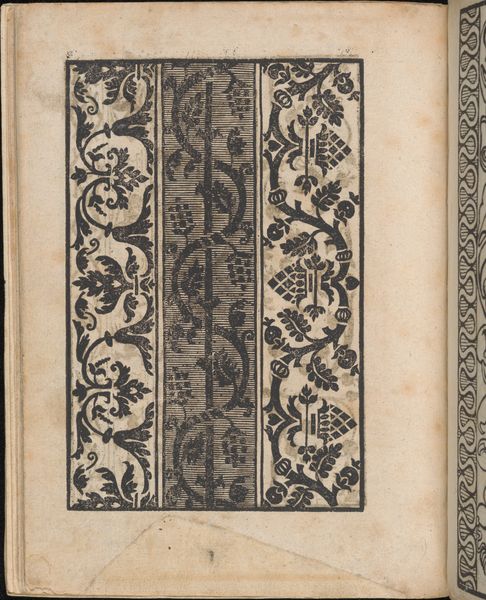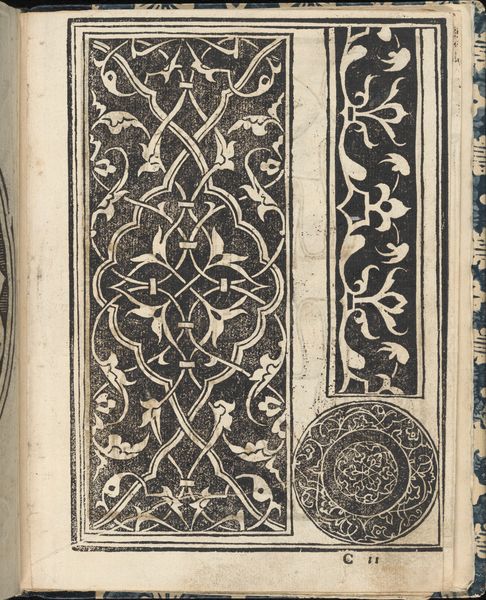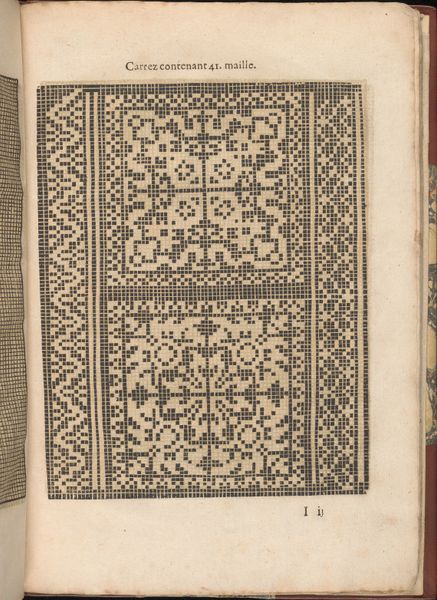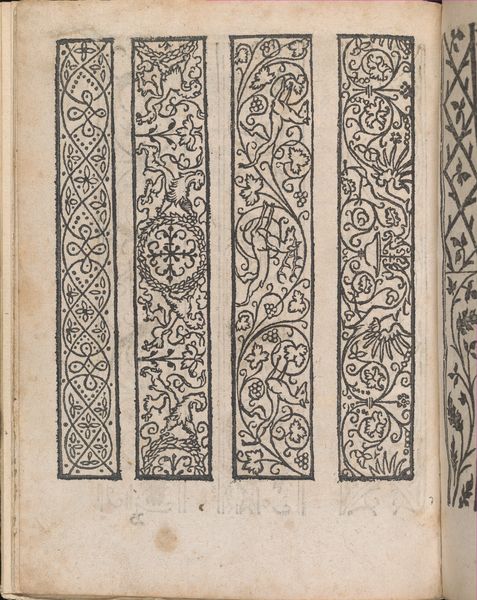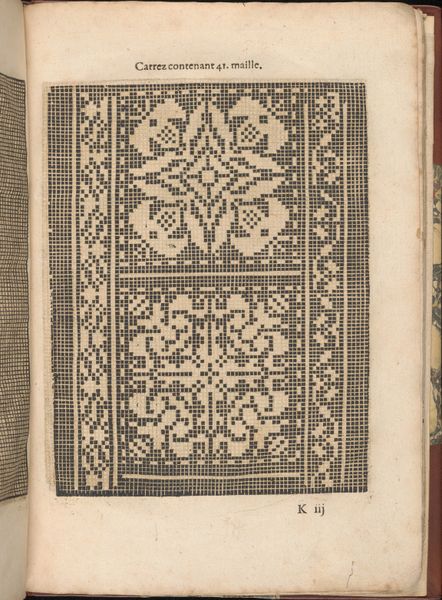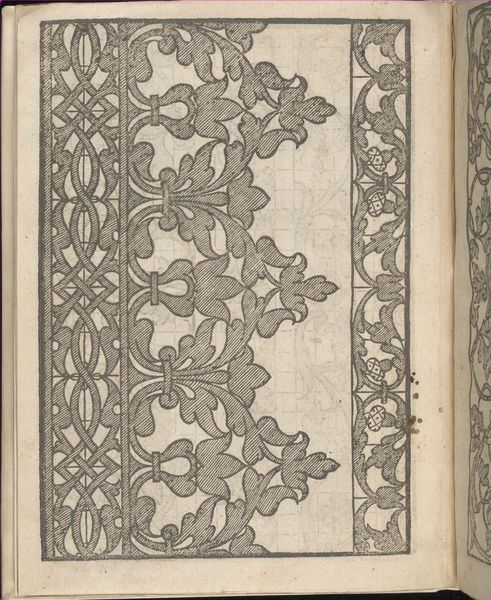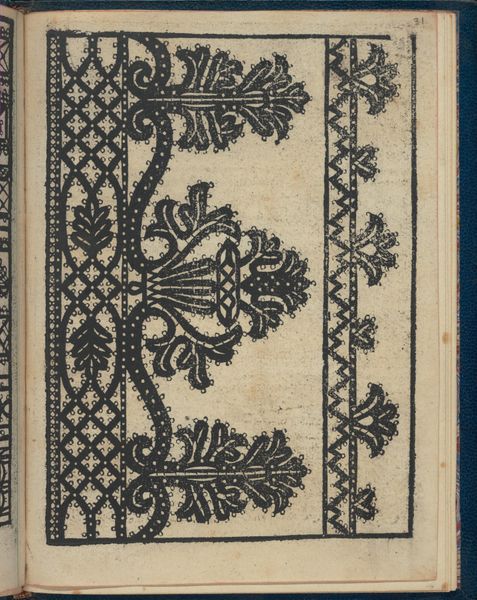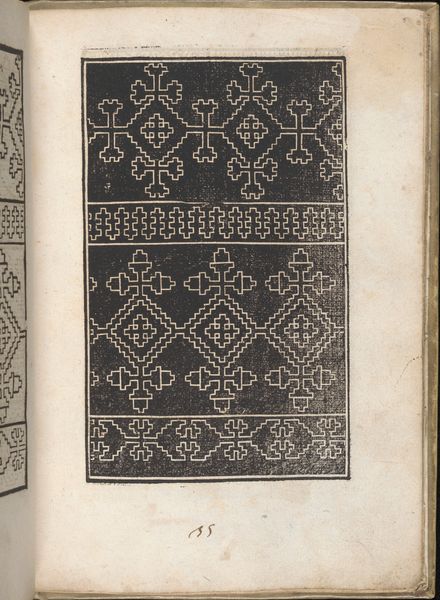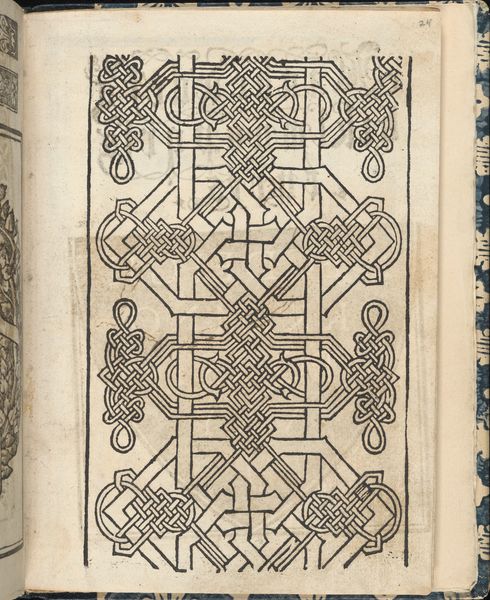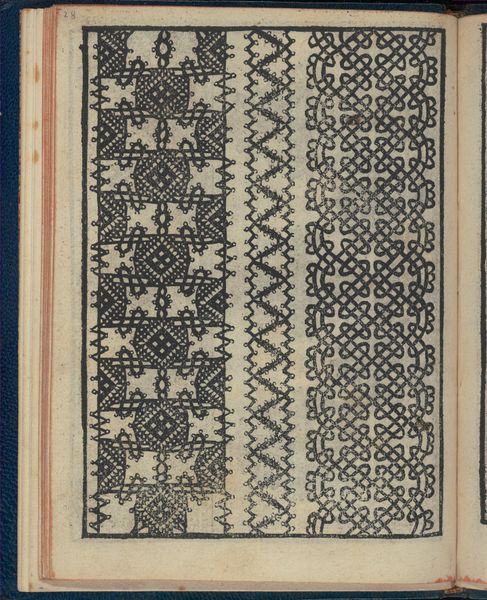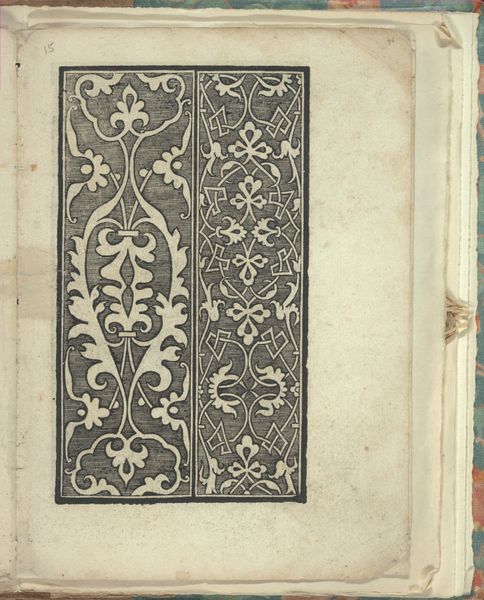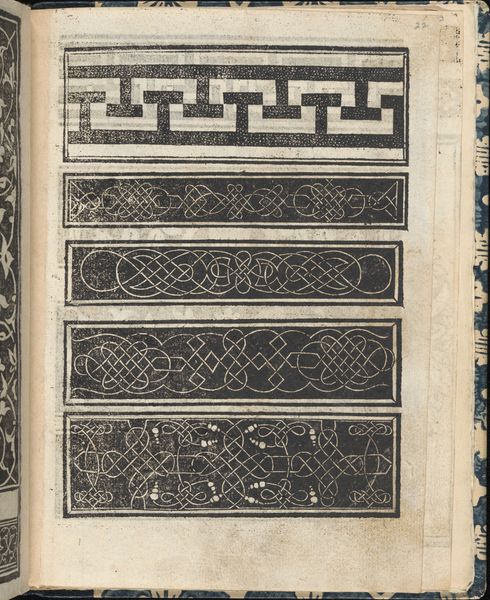
drawing, print, paper, ink
#
drawing
# print
#
paper
#
11_renaissance
#
ink
#
geometric
#
islamic-art
#
decorative-art
#
calligraphy
Dimensions: Overall: 7 13/16 x 6 3/16 x 3/8 in. (19.8 x 15.7 x 1 cm)
Copyright: Public Domain
Curator: This page, "Essempio di recammi, page 23 (recto)," comes from a book by Giovanni Antonio Tagliente, dating back to 1530. Currently, it resides here at the Metropolitan Museum of Art. Editor: It's striking! I am drawn to the sharp contrast between the stark black ink and the aged paper. There's something both delicate and incredibly precise about the linework. Curator: Indeed. Tagliente's work is interesting when you consider its accessibility at the time. Pattern books like this one circulated widely. Consider this predates widespread, commercial printing—making pattern dissemination complex. Editor: Absolutely. You're looking at a sophisticated process, really. A print, likely a woodcut from the looks of the starkness of the blacks and the density of the ink, intended for broader, perhaps domestic, consumption. Think about the skill involved in carving the block itself! And the availability of the block influencing how or by whom this particular page might be interpreted or produced with thread. Curator: Exactly! The influence of Islamic art is also worth noting; these repeating geometric patterns were in vogue and reflect the exchange of design aesthetics throughout the Mediterranean during the Renaissance. This sort of pattern then shows up in upper class interiors, as decorative features, but originating from these affordable, circulated copy books. Editor: So, a sort of democratization of high-end aesthetics through accessible printed material. Interesting. Looking at the central design element, it makes you wonder who and how someone would consume or translate this to, say, needlework. The level of care in crafting something from it versus tossing it aside as simple practice material. Curator: I see your point. The tension between function and artistic value is so palpable. It’s easy to look at it now in a museum setting and forget its original context of use. Editor: Right, and now here we are examining both its material making and its role within a complex socioeconomic system that circulated artistic influence in tangible ways. Curator: Agreed, and I am considering it both for its production value and as evidence of social exchange. Editor: Beautiful, it really is an incredible visual representation of complex artistic exchange.
Comments
No comments
Be the first to comment and join the conversation on the ultimate creative platform.
